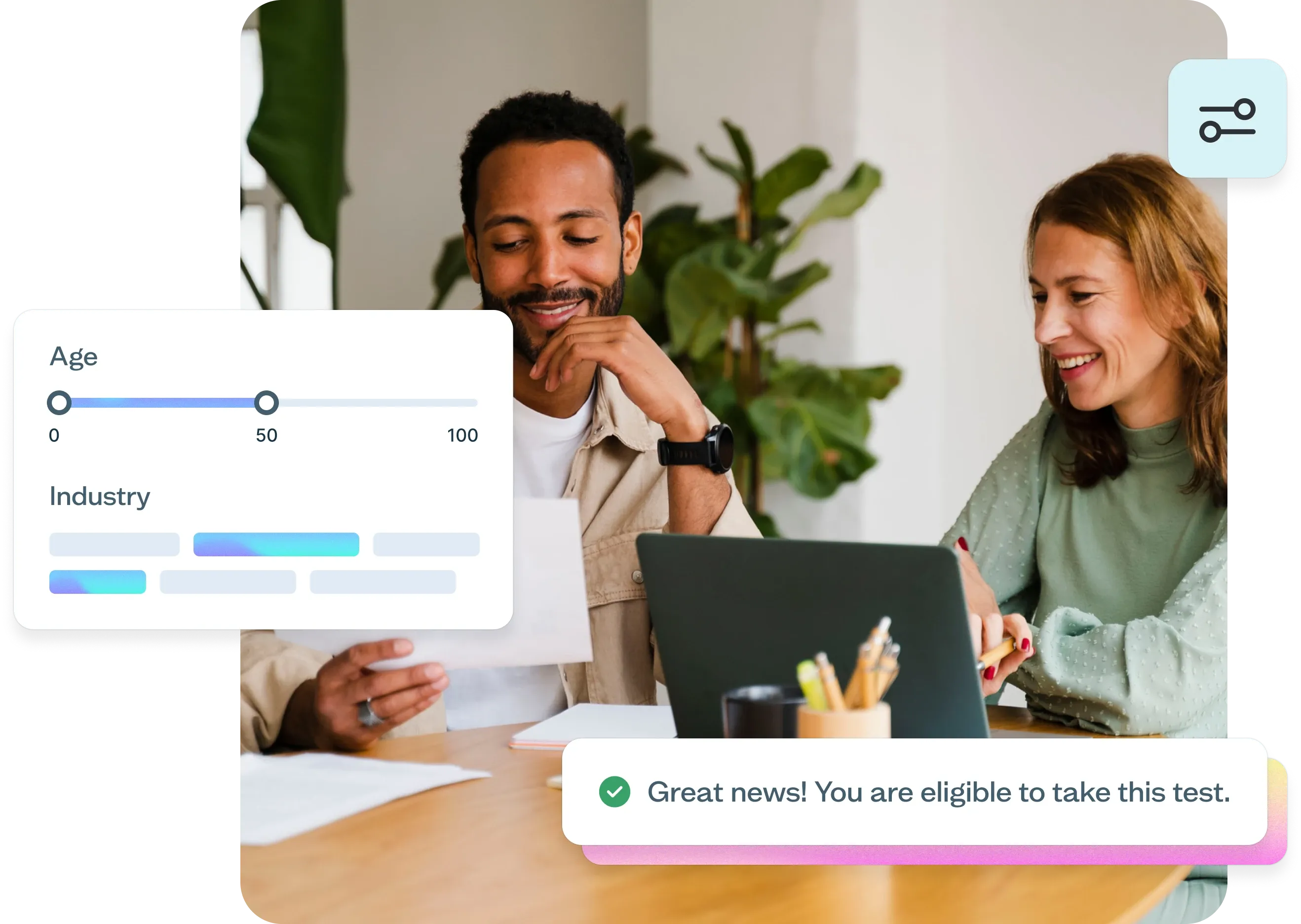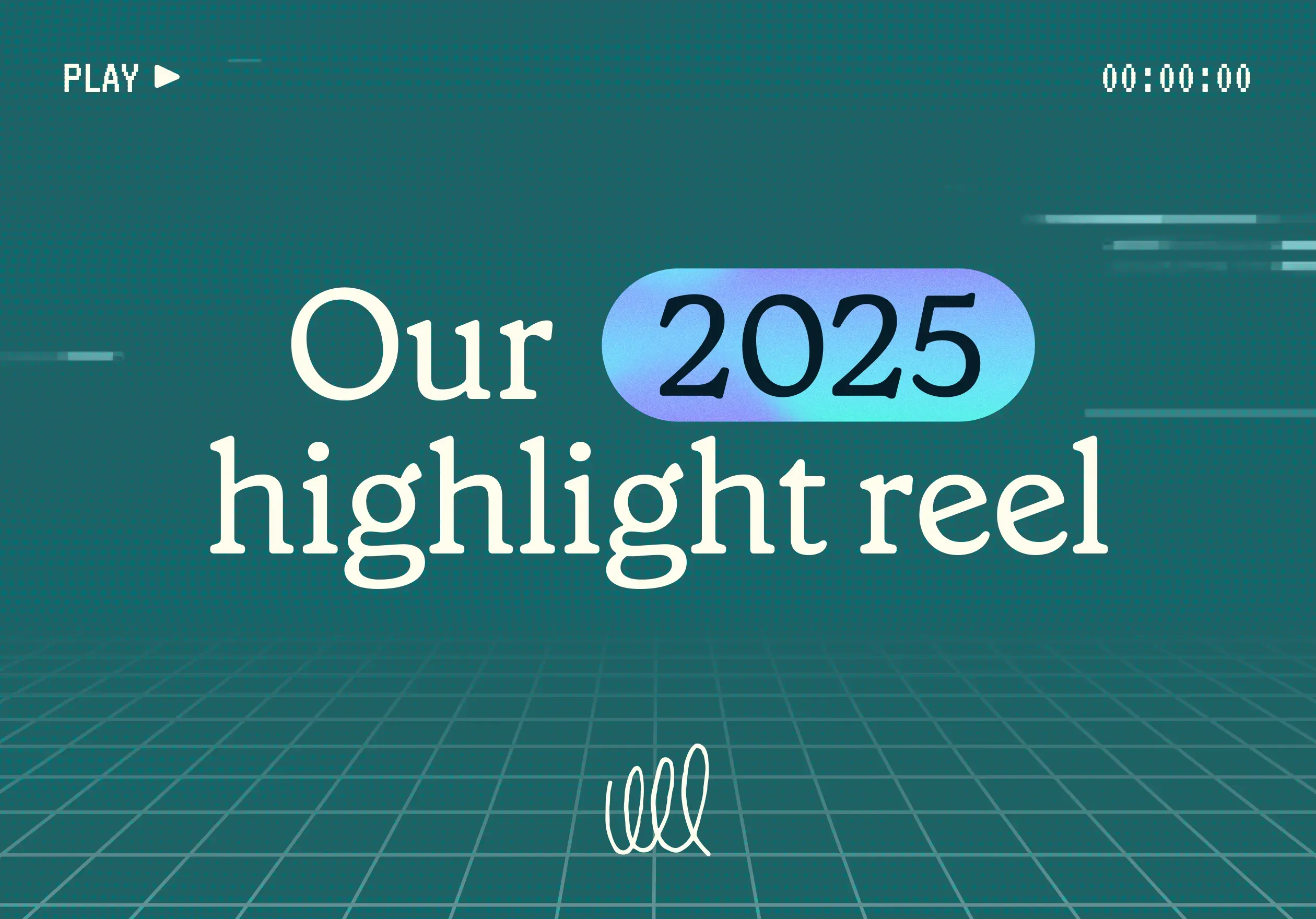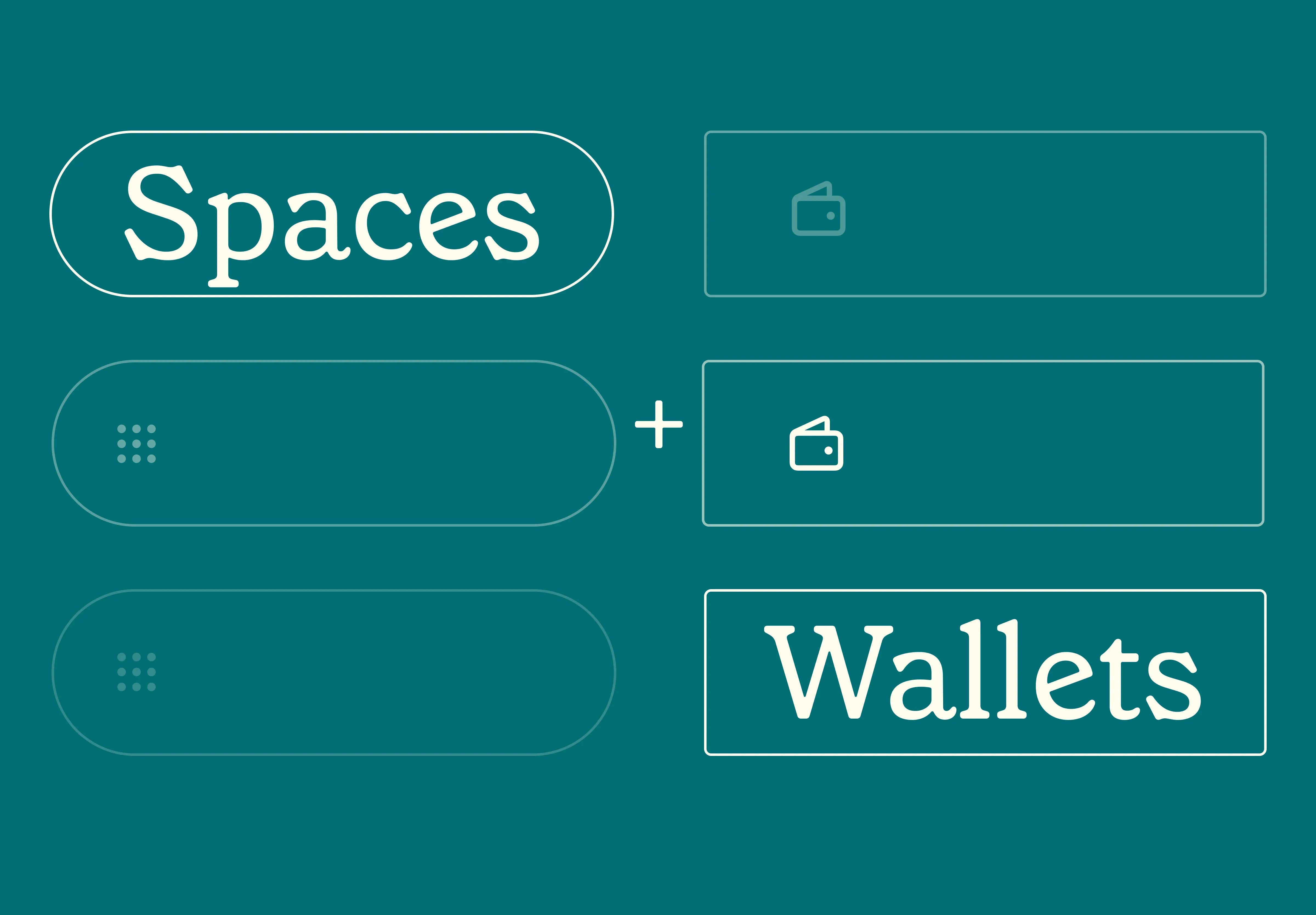17 Dec 2025
|32 min
UX design trends 2026
What UX design trends matter in 2026? We surveyed 100 designers to find out. Discover which trends are rising, fading, and the biggest barriers to adoption.

The UX design landscape is shifting. After years of AI hype and visual complexity, designers are recalibrating toward more thoughtful, evidence-based approaches.
To understand what's really happening, we surveyed 100 UX, UI, and product designers about the trends they see fading and the ones they're most excited about for 2026.
The results reveal an industry in transition. 73% of designers say AI as a design collaborator will have the most impact in 2026, while 93% are already implementing generative AI tools like ChatGPT and Midjourney in their current work. But there's a catch: 54% report their clients want to jump on AI trends without clear use cases, representing the biggest gap between current trends and what stakeholders actually need.
Here's what's changing in UX design trends for 2026.
Which UX design trends will have the most impact in 2026?
When we asked designers which trends will have the most impact on UX design in 2026, AI dominated the responses – but with important nuances about how it should be used.
Top trends expected to impact UX design in 2026:
Trend | Percentage of designers |
|---|---|
AI as a design collaborator (not just a tool) | 73% |
AI agents that take actions for users | 60% |
AI-powered accessibility tools and testing | 53% |
Transparent AI disclosure | 47% |
Real-time personalization | 32% |
Multimodal interfaces (voice + touch + gesture) | 24% |
Micro-interactions and motion design | 23% |
Privacy-first design patterns | 18% |
Spatial computing/mixed reality | 8% |
Sustainable design | 8% |
The standout finding: 73% of designers believe AI as a design collaborator will have the most impact. This isn't about AI replacing designers – it's about AI augmenting their capabilities.
The second-highest response at 60% was AI agents that take actions for users, like booking appointments or managing tasks. This signals a shift from AI that responds to requests to AI that proactively works on users' behalf.
Notably, 53% expect AI-powered accessibility tools to have a major impact, suggesting that AI might finally help make accessibility the default rather than an afterthought.
Which UX design trends designers are implementing
Before looking at what's fading and rising, it's worth understanding what designers are actually doing right now. This provides context for where the industry is heading.
Current UX design trend implementation:
What designers are implementing now | Percentage |
|---|---|
Using generative AI tools (ChatGPT, Midjourney, etc.) | 93% |
Focusing on accessibility from the start | 50% |
Adding micro-interactions and animations | 50% |
Building AI-powered personalization | 36% |
Implementing privacy controls | 16% |
Designing voice interfaces | 7% |
Creating spatial/3D interfaces | 5% |
The data reveals an interesting snapshot: 93% of designers are already using generative AI tools in their work. This is nearly universal adoption – AI isn't a future trend, it's the present reality.
Equally important: 50% are focusing on accessibility from the start. This represents a shift from treating accessibility as an afterthought. Combined with the 53% who expect AI-powered accessibility tools to have a major impact, we're seeing accessibility become a priority.
Another 50% are adding micro-interactions and animations, showing that motion design is actively being implemented, not just talked about.
The lower adoption rates for voice interfaces (7%) and spatial/3D interfaces (5%) suggest these remain niche implementations rather than mainstream practices – at least for now.
UX design trends that are fading in 2026
Not every trend stands the test of time. Here are the UX design trends that designers say are losing momentum – and why.
Glassmorphism
Glassmorphism – the translucent, frosted-glass style that Apple popularized – was the most frequently mentioned fading trend in our survey. While visually striking, designers are moving away from it for practical reasons.
"I hope the glass hype will pass. The accessibility is horrible and it looks way too detailed to be usable," one designer told us.
Another added: "Liquid glass from iOS 26. It's against accessibility too much."
The problem with glassmorphism:
Issue | Impact |
|---|---|
Low contrast | Text becomes difficult to read, especially for users with visual impairments |
Readability challenges | Layered transparency creates visual noise that competes with content |
Complexity without benefit | Adds visual detail that doesn't enhance functionality |
Accessibility violations | Often fails WCAG contrast requirements |
The trend prioritizes aesthetics over usability. As one designer put it: "Glassmorphism (it was brought back from Apple this year but I'm sure it will not last)."
What's replacing it? Simpler, performance-focused interfaces with better accessibility. Designers are returning to the fundamentals: clear hierarchy, readable text, and visual design that serves the user's goals rather than competing with them.
AI hype
Here's an important distinction: AI isn't disappearing from UX design trends. But the hype around it is finally calming down.
While 93% of designers are using generative AI tools and 73% believe AI as a collaborator will have the biggest impact, our survey revealed a significant problem: 54% of designers say their clients or stakeholders want to jump on AI trends without clear use cases.
This represents the biggest gap between current trends and actual stakeholder needs.
"Maybe AI. But not totally – it just won't be hyped as it is now," one designer explained.
Another observed: "I think there is such a rush to incorporate AI into our work that it will be difficult to sustain."
The stakeholder disconnect:
When we asked about the biggest gap between current trends and what clients actually need, the responses were revealing:
Gap between trends and stakeholder needs | Percentage |
|---|---|
They want to jump on AI trends without clear use cases | 54% |
They want flashy features over solid fundamentals | 17% |
They're risk-averse and avoid new trends entirely | 12% |
They undervalue accessibility | 9% |
There's no gap – trends align with their priorities | 8% |
More than half of designers are experiencing clients who want AI for AI's sake. This pressure to add AI without strategy is exactly what designers say needs to fade in 2026.
What's changing about AI in 2026:
Fading | Rising |
|---|---|
AI as novelty feature | AI as standard functionality |
"AI-powered" as a marketing buzzword | Purposeful AI implementation |
AI chat widgets on every screen | AI that works in the background |
Adding AI without clear use case | Evidence-based AI features |
The pushback isn't against AI itself – it's against thoughtless implementation. As one designer noted: "Baking AI in everything without a real use case behind it."
Another added: "Complex AI chat widgets on every screen. Most of them add noise, not clarity."
The shift for 2026? As one respondent explained: "Offering AI being front and center. I think it will become a basic feature in most apps and the differentiator will be about what AI can do better."
AI is becoming infrastructure rather than innovation. It's moving from "Look, we have AI!" to quietly make experiences better in ways users might not even notice.
Vibe coding without validation
Vibe coding – using AI to quickly generate functional prototypes from prompts or screenshots – exploded in 2025. But designers are recognizing its limitations when used without proper validation.
"Vibe coding that results in unusable/broken products," one designer warned.
Another clarified: "Vibe-coded products. Good for prototyping, ineffective for everything else."
The most detailed response captured the core issue: "The trend of shipping AI-generated UIs without proper user validation. Many stakeholders have pushed to adopt AI rapidly in 2025, often prioritizing output over user insight or design expertise. This has created additional design overhead with limited ROI. I expect teams to recalibrate toward more evidence-based workflows once it's clear that current AI-heavy approaches aren't improving market performance."
The problem:
Speed prioritized over user needs
Designs shipped without testing
Creates design debt that teams pay for later
Outputs look good but don't solve real problems
What's replacing it: AI-assisted design that's validated with real users. The tool is valuable – but only when combined with proper research and testing.
Over-complexity in visual design
Designers are ready to simplify. The pendulum is swinging away from visually heavy interfaces toward cleaner, more functional website designs.
Designers mentioned:
"Flashy and/or overly designed websites"
"High design heavy websites with no clear value proposition"
This trend reflects a broader shift in priorities.
What designers are deprioritizing:
Decoration for decoration's sake
Visual effects that slow performance
Design that prioritizes portfolio appeal over user needs
Complexity that creates accessibility barriers
What designers are prioritizing:
Clarity and readability
Performance and speed
Functional design that serves user goals
As one designer put it: "It's more about selling one thing with clear value, than showing all of the portfolio without proper funnel design in place."
The “unicorn designer” expectation
One respondent highlighted a concerning trend that's hopefully fading: "One person fits all (engineer as designer, researcher, project manager, content writer, accessibility specialist)."
This captures a real problem in the industry. As companies try to do more with less, they create impossible role expectations. The result? Burnout, lower quality work, and designers stretched too thin to excel at anything.
The shift for 2026? Hopefully we’ll see organizations recognizing that quality work requires specialized skills. While collaboration across disciplines remains important, asking one person to be expert at everything isn't sustainable.
UX design trends on the rise in 2026
Now for the exciting part. Here are the UX design trends that have designers most enthusiastic about the year ahead.
AI as collaborative tool
The most exciting trend for 2026? AI that augments designers' work rather than trying to replace them.
73% of designers say AI as a design collaborator will have the most impact in 2026 – the highest of any trend we measured. When we asked about specific technologies that will impact how designers work, 58% pointed to AI design assistants like Figma AI, followed by 24% for advanced testing/research AI.
When we asked designers what emerging trends they're most excited about, AI-related responses dominated – but with an important qualifier. Designers want AI that helps them work better, not AI that works instead of them.
How designers want to use AI in 2026:
Use case | What designers said |
|---|---|
Prototyping | "I am excited about AI assistants for design (Figma Make) not to design but to give me realistic prototypes that I can test with." |
Research assistance | "AI for testing/interview/reporting is the most promising trend." |
Analysis and synthesis | "AI research synthesis" and "Unmoderated AI research testing." |
Accessibility | "I'm excited to use AI more for prototyping and accessibility purposes." |
Speed | "Using AI to speed up UX research process." |
One designer captured the evolution: "AI from just a helper is going to shift into a fully-scaled team player."
But importantly, designers see AI as a collaborator, not a replacement. The excitement centers on specific, practical applications:
Analyzing interview transcripts
Identifying patterns in user feedback
Synthesizing findings across multiple studies
Automating recruitment and scheduling
AI for design:
Generating realistic prototypes for testing
Creating variations to test different approaches
Handling repetitive tasks
Accessibility checking and suggestions
AI for testing:
Running unmoderated studies at scale
Analyzing behavioral data
Identifying usability issues
Providing preliminary insights
The key difference from 2025? Designers are moving from wondering "Can AI do this?" to asking "How can AI help me do this better?"
As one respondent noted: "I think employing AI as an assistant was already pretty big in 2025, at least for me. But the process is always AI empowered rather than AI native for now."
Real-time personalization
Interfaces that adapt to individual users in real time emerged as a significant trend, with 32% of designers saying it will have a major impact in 2026. Currently, 36% of designers are actively building AI-powered personalization into their work.
"AI-powered real-time personalized interface. It reflects the reality – everyone should see different stuff based on their preference and activities," one designer explained.
Another described it as: "AI-driven adaptive interfaces that personalize layouts and interactions in real time, making experiences more intuitive and seamless."
What real-time personalization looks like:
Element | How it adapts |
|---|---|
Layout | Reorganizes based on which features a user uses most |
Content | Surfaces information relevant to a user's current context |
Navigation | Prioritizes paths the user takes frequently |
Functionality | Shows or hides features based on expertise level |
Visual hierarchy | Emphasizes elements that matter to a specific user |
This goes beyond basic customization settings. It's interfaces that learn from behavior and automatically adapt without requiring manual configuration.
Examples of real-time personalization:
A project management tool that reorganizes your dashboard based on which views you check most often
An ecommerce site that adapts category navigation based on your browsing patterns
A design tool that surfaces the features you use while hiding ones you never touch
Documentation that adjusts complexity based on your experience level
The privacy consideration:
With personalization comes responsibility. Designers emphasized the importance of transparency:
"Clear consent flows and notifying when AI is being used"
"Privacy personalized"
"The ethical use approach to AI"
Users want personalized experiences – but they also want to know what data is being used and have control over it.
Agentic AI and passive task automation
One of the most intriguing trends for 2026 is agentic AI – AI that works on your behalf, often in the background, to complete tasks over time. 60% of designers believe AI agents that take actions for users will have a major impact in 2026, making it the second-highest rated trend after AI as a design collaborator.
One designer painted a clear picture: "I'm looking forward to AI agents performing passive tasks for users. Like, 'Take your time to find me the best travel deals from XXX to different destinations. I'm off to bed for now!' Stuff like that."
Another noted: "Multistep agentic AI – it's getting to work like humans more and more."
What makes agentic AI different:
Traditional AI | Agentic AI |
|---|---|
Responds to immediate requests | Works on tasks over time |
Requires active interaction | Works in the background |
Synchronous | Asynchronous |
Gives you information | Takes action on your behalf |
You tell it what to do | You tell it what you want to achieve |
Examples of agentic AI in UX:
"Find me the best flight options and book when prices drop below $X"
"Monitor these competitors and alert me to significant changes"
"Research this topic and compile a summary when you're done"
"Organize these files based on the project they relate to"
As one designer put it: "The use of AI to do things for the user, book activities, buy stuff."
The UX challenge? Designing interfaces for AI that works when you're not looking. This requires:
Clear ways to set goals and constraints
Transparency about what the AI is doing
Controls to pause, modify, or stop tasks
Confidence indicators so users know the AI is working
Clear notifications when tasks are complete
Generative UI
Generative UI – interfaces that are created on-the-fly based on context rather than pre-designed screens – emerged as a recurring theme in responses.
Multiple designers mentioned excitement about:
"Generative Interfaces"
"Gen UI"
"Generational UI"
What is generative UI?
Instead of designing every possible screen and state, generative UI creates interfaces dynamically based on:
User intent and context
Available data and content
Device capabilities
User preferences and history
Current task or goal
Traditional UI vs generative UI:
Traditional approach | Generative approach |
|---|---|
Designer creates every screen | System generates interfaces based on context |
Fixed layouts and components | Adaptive layouts that respond to content |
Same interface for all users | Personalized interfaces per user |
Updates require design and development | Interface evolves automatically |
Potential applications:
Dashboards that arrange themselves based on what data is most relevant right now
Forms that adapt their fields based on previous answers
Search results that present information in different formats based on the query
Documentation that generates pages based on what you're trying to accomplish
The challenge:
As one designer noted about trends they hope will fade: "The need to come up with unique UX patterns as AI will generate solutions based on common practices."
Generative UI needs to balance innovation with usability. Generated interfaces still need to be:
Predictable enough that users can learn them
Consistent enough to build mental models
Accessible to all users
Performant and fast
Motion design and micro-interactions
Thoughtful animation is making a comeback as a UX design trend for 2026. 23% of designers expect micro-interactions and motion design to have major impact, while 50% are already adding micro-interactions and animations to their current work – matching the adoption rate of accessibility-first design.
Multiple designers mentioned:
"Motion and micro interactions"
"Motion design, applicable in all devices viewport"
"Micro interactions"
Why motion design is rising:
Reason | Benefit |
|---|---|
Performance improvements | Animations run smoothly across devices |
Better understanding | Designers know when motion enhances UX |
Accessibility awareness | Respect for reduced motion preferences |
Device capabilities |
Motion design in 2026 isn't about gratuitous effects. It's about using animation purposefully to:
Provide feedback that an action was successful
Show relationships between elements
Guide attention to important changes
Smooth transitions between states
Communicate system status
Add personality without sacrificing usability
One designer noted: "I'm excited to see how spatial experience design develops."
This connects motion to the broader trend of designing for three-dimensional and spatial interfaces – whether that's XR environments or more sophisticated depth and layering on traditional screens.
The accessibility consideration:
The comeback of motion design is happening alongside better support for reduced motion preferences. Modern motion design respects that some users need minimal animation while others benefit from it.
Accessibility as a standard
Accessibility is finally moving from "nice to have" to non-negotiable in UX design trends. The data supports this: 50% of designers are already focusing on accessibility from the start in their current work, and 53% expect AI-powered accessibility tools to have a major impact in 2026.
"I hope that keeping the focus on accessibility gives everyone an equal way of enjoying the web and consuming content," one designer said.
Multiple designers specifically mentioned excitement about:
"AI for accessibility"
"Clear consent flows and notifying when AI is being used"
"Properly and purposefully implementation of AI"
What's driving accessibility in 2026:
Factor | Impact |
|---|---|
Legal requirements | Increased lawsuits and regulations |
AI tools | Makes accessibility testing and fixes easier |
Browser improvements | Better built-in accessibility features |
Design tool integration | Accessibility checks built into workflows |
Business case | Better ROI data for accessible design |
This captures the tension: AI-generated designs and trendy visual effects often create accessibility problems. The hope for 2026 is that accessibility becomes baked into the tools themselves, making it harder to accidentally ship inaccessible experiences.
Specific accessibility focus areas for 2026:
Color contrast (especially with glassmorphism fading)
Keyboard navigation in complex interfaces
Screen reader compatibility with dynamic content
Accessible AI interfaces
Clear focus indicators
Reduced motion preferences
Text alternatives for generated content
As one designer put it, we need: "Delegating accessibility to easily and cheaply installed pre-set plugins" to fade, and instead build accessibility into our processes from the start.
Enhanced prototyping tools
Designers want better ways to create and test realistic prototypes – and they're excited about the tools emerging to meet this need.
What designers said:
"Advanced prototyping tools that allow for easier testing"
"Prompt-based prototyping, AI assistance for research"
"AI advance testing"
"Dedicated AI channels for prototyping/simulating early stage UX research"
The excitement centers on tools that bridge the gap between static designs and coded products:
Traditional prototyping challenges:
Challenge | How new tools address it |
|---|---|
Time-consuming to create | AI generates functional prototypes from descriptions or designs |
Limited interactivity | Code-based prototypes with real logic |
Difficult to test edge cases | Easy to create variations and scenarios |
Doesn't reflect real performance | Prototypes that behave like real products |
As one designer explained: "I am excited about AI assistants for design (Figma Make) not to design but to give me realistic prototypes that I can test with."
This is a crucial distinction. Designers don't want AI to design for them – they want AI to help them test their designs more effectively.
What enhanced prototyping enables:
Testing with realistic data and content
Evaluating performance and load times
Catching interaction issues before development
Getting user feedback on functional prototypes
Iterating faster based on testing results
Another designer noted: "Classic prototype with basic actions because we will inject AI codes to have advanced interactions" as a trend that's fading – replaced by prototypes that can handle complex, realistic interactions from the start.
Multimodal interfaces
Beyond screen-only interactions, 24% of designers are excited about interfaces that work across multiple input and output modes. However, current implementation remains low, with only 7% designing voice interfaces and 5% creating spatial/3D interfaces.
This gap between expected impact (24%) and current implementation (7% voice, 5% spatial) suggests multimodal design is still emerging – designers see the potential but haven't widely adopted it yet.
"I'd say I'm most looking forward to the growing importance of multimodal interfaces and controls as they intersect with AI, both for users as well as for designers," one designer explained.
Another mentioned: "3D experience and expansion of voice commanded tools."
What multimodal means:
Single mode | Multimodal |
|---|---|
Touch only | Touch + voice + gesture |
Visual only | Visual + audio + haptic |
Screen-bound | Screen + spatial + ambient |
One input method | Multiple simultaneous inputs |
Examples of multimodal interfaces:
Voice commands while using touch interface
Gesture controls combined with visual feedback
Spatial audio that guides attention
Haptic feedback that confirms actions
Ambient displays that show information without requiring interaction
The trend reflects how people naturally communicate – using multiple modes simultaneously. You might point at something while describing it, or use hand gestures while speaking.
As AI becomes more sophisticated, interfaces can better understand and respond to these natural, multi-modal inputs.
Design implications:
Need to design for voice and touch simultaneously
Consider how modes complement each other
Provide redundant ways to accomplish tasks
Make interfaces accessible across modes
Design for context switching between modes
Ethical AI and transparency
Users want to know when and how AI is being used in their experiences. 47% of designers believe transparent AI disclosure will have a major impact in 2026, while 18% expect privacy-first design patterns to be significant. Currently, only 16% of designers are implementing privacy controls in their work – suggesting this is an area ripe for growth.
"The ethical use approach to AI," one designer noted.
Others emphasized:
"Clear consent flows and notifying when AI is being used"
"Properly and purposeful implementation of AI"
"Real-time quality indicators in AI-assisted UIs (confidence, source hints, reversibility states) becoming standard affordances"
Why transparency matters:
One designer captured the user perspective: "Already as a consumer, too much AI can be a turn-off. Striking a balance for using AI and being transparent about how it’s used is important as the natural counter backlash as it continues to grow."
What ethical AI design looks like:
Principle | Implementation |
|---|---|
Transparency | Clear indicators when AI is being used |
Consent | Opt-in for AI features, not default |
Control | Easy ways to disable or limit AI |
Explanation | Understanding how AI made decisions |
Confidence | Showing AI's certainty level |
Reversibility | Easy to undo AI actions |
Human fallback | Access to human alternatives |
Specific design patterns emerging:
AI badges or indicators on generated content
Confidence scores visible to users
Sources shown for AI-generated information
Clear ways to report AI errors
Settings to control AI behavior
Human override options always available
The goal isn't to hide AI – it's to be honest about it. Users are more likely to trust AI features when they understand what's happening and feel in control.
Simpler, performance-focused UI design trends
Clean, minimal interfaces that prioritize performance and content over decoration emerged as a rising trend.
"How heavy design is replaced with paper-like and fluid UI design," one designer said.
Another noted: "UI that hides complexity and makes it simple."
The shift happening:
Fading | Rising |
|---|---|
Decoration for its own sake | Every element serves a purpose |
Heavy visual effects | Clean, readable interfaces |
Complex layering | Clear hierarchy |
Slow, animation-heavy | Fast, performant |
Designer portfolio pieces | User-focused simplicity |
This trend connects to several of the fading trends we covered earlier – glassmorphism, over-complexity, and flashy design are all giving way to something more restrained.
What "paper-like" design means:
Clear visual hierarchy like a well-designed document
Generous whitespace
Readable typography at comfortable sizes
Subtle use of color for meaning
Depth through hierarchy rather than effects
Content comes first
Industry context: UX design trends and the bigger picture
Understanding these UX design trends requires looking at the broader context shaping the industry.
The reality check on AI in UX design
While AI dominates both the fading and rising trends, designers maintain a balanced perspective about its current capabilities. When we asked which technology will have the biggest impact on how designers work, the responses showed clear priorities:
Technology impact on designer workflows:
Technology | Percentage |
|---|---|
AI design assistants (Figma AI, etc.) | 58% |
Advanced testing/research AI | 24% |
Voice/multimodal prototyping tools | 10% |
Nothing significant will change | 7% |
Spatial computing tools | 0% |
58% of designers believe AI design assistants like Figma AI will have the biggest impact on their work – a strong majority. But it's telling that 24% are more excited about AI for testing and research, not design creation.
"I think that the belief that AI is capable of, right now, creating production ready UIs is the biggest trend will probably fade," one designer observed.
Another noted: "AI limitations becoming more apparent and thus the need for more humans in the loop."
The balanced view:
AI can | AI can't (yet) |
|---|---|
Generate design variations quickly | Understand user needs without research |
Analyze data at scale | Replace strategic thinking |
Automate repetitive tasks | Make judgment calls on trade-offs |
Assist with accessibility testing | Fully solve accessibility challenges |
Speed up prototyping | Ship production-ready code unsupervised |
As one designer put it: "The process is always AI empowered rather than AI native for now."
This captures where the industry is in 2026: AI is a powerful tool that makes designers more effective, but it's not replacing the need for human expertise, judgment, and understanding of user needs.
As one designer aptly put it: "I'm hoping using AI in the way CEO's want... it's a tool not a final product creator."
The state of design organizations
Several designers expressed concern about the stability of design teams and organizations.
"Having stability or functional design orgs seems like it is still on the decline. Eventually it will come back, but I worry that 2026 will continue to be a downward spiral before the AI bubble bursts and things swing back up in either H2 2026 or 2027," one designer shared.
This reflects real anxiety in the industry:
Budget cuts affecting design teams
Restructuring as companies experiment with AI
Pressure to do more with less
Uncertainty about which roles will exist long-term
Another designer noted: "UX design system expert – if AI can start creating design systems and support maintenance, that role will become less significant."
However, the hope is that as organizations recognize AI's limitations and the value of human expertise, the pendulum will swing back toward properly resourced design teams.
Mobile-first is evolving
One interesting observation: "It seems like it's been on the decline already but a mobile-first philosophy is only going to keep fading. Design tools and practices are approached in a way that makes universal device compatibility much more second nature."
This doesn't mean mobile is less important – it means the approach is maturing:
From "design for mobile first" to "design for all devices simultaneously"
Better design systems that work across breakpoints
Tools that make responsive design easier
Recognition that users switch between devices fluidly
The goal isn't mobile-first or desktop-first – it's device-agnostic design that works everywhere.
The evolution of design systems
Design systems received mixed mentions in our survey, suggesting this UX design trend is evolving rather than disappearing.
Different perspectives:
"Design systems – forget about this. Use something ready, like AntD." (Suggesting custom systems aren’t needed)
"UX design system expert – if AI can start creating design systems and support maintenance, that role will become less significant" (concern about AI impact)
"Bridging design and dev on design systems" (excitement about better collaboration)
What this means:
Design systems aren't going anywhere – but how we create and maintain them is changing:
More companies using established systems rather than building custom
AI helping with maintenance and documentation
Better integration between design and development
Focus shifting from building systems to implementing them well
The trend is toward pragmatism: use what works, customize what you must, and focus energy on solving unique problems rather than reinventing common patterns.
Emerging UX design trends to watch
Several smaller UX design trends appeared in responses – not widespread enough to be major trends yet, but worth watching.
Spatial computing and XR design
While spatial computing generated some excitement, the numbers tell a more nuanced story. Only 8% of designers we surveyed expect spatial computing/mixed reality to have a major impact in 2026, and just 5% are currently creating spatial/3D interfaces.
Counter-perspective: "Mixed reality UX" appeared in the fading trends list.
This suggests XR is in an uncertain phase – interesting to some, but not yet mainstream enough to be a clear rising trend. When asked about future impact, 0% of designers selected spatial computing tools as having the biggest impact on their workflow.
Video generation and dynamic content
"Complex video generation" was mentioned as an exciting trend, with one designer explaining: "Being able to generate video via script that could customize to your needs i.e. for ads and presentations."
This connects to the broader generative AI trend – not just generating text and images, but dynamic video content.
Geolocation and context-aware experiences
"Geo locate" appeared as an emerging trend, suggesting more UX design that adapts based on physical location.
This could mean:
Interfaces that change based on where you are
Content relevant to your location
Features that activate in specific contexts
Privacy-respecting location awareness
Sustainability and low-tech design
8% of designers expect sustainable design to have a major impact in 2026 – a small but notable percentage. One designer mentioned: "Low-tech trends and sustainability, hand-valued craftsmanship – unfortunately they are not flashy as AI ones."
This represents a counter-trend to the AI dominance – designers who value:
Performance and efficiency
Minimal resource usage
Craft and attention to detail
Sustainable design practices
While not a majority view, it reflects an important perspective about what design should value beyond the latest technology.
The decline of design thinking
"Design thinking standard approaches – already see it disappearing," one designer noted.
This suggests the formalized "design thinking" methodology is losing favor, possibly replaced by more flexible, integrated approaches to problem-solving.
Barriers to adopting new UX design trends
Understanding what prevents designers from trying new trends helps explain why some gain traction while others don't.
What prevents designers from adopting new UX trends:
Barrier | Percentage |
|---|---|
Budget constraints | 52% |
Lack of time | 50% |
Don't see clear business value | 36% |
Lack of technical resources | 35% |
Stakeholder resistance | 31% |
Ethical concerns | 17% |
Accessibility compliance challenges | 13% |
The top two barriers – budget (52%) and time (50%) – affect roughly half of all designers. This context is crucial for understanding which trends will actually succeed in 2026.
Trends that require significant budget or time investment face an uphill battle. This partially explains why:
Simple, performant design is rising (doesn't require extra budget)
Glassmorphism is fading (time-intensive to implement accessibly)
AI tools are being adopted (they save time despite learning curve)
Notably, 36% don't see clear business value in new trends, which connects directly to the 54% whose stakeholders want to jump on AI without clear use cases. There's a gap between trend hype and demonstrated value.
The 31% facing stakeholder resistance suggests that getting buy-in remains a significant challenge – even for trends that designers believe will have a major impact.
Key takeaways: UX design trends 2026
Here's what you need to know about UX design trends heading into 2026, backed by data from 100 designers.
The big shifts
1. AI is normalizing
93% of designers already use generative AI tools
73% say AI as a collaborator will have the biggest impact in 2026
But 54% report stakeholders want AI without clear use cases
The shift: from hype to utility, from novelty to infrastructure
2. Accessibility is non-negotiable
50% are already focusing on accessibility from the start
53% expect AI-powered accessibility tools to have major impact
Only 9% of stakeholders undervalue accessibility (down from previous years)
Finally becoming standard practice rather than an afterthought
3. The stakeholder gap is real
54% of clients want to jump on AI trends without clear use cases
17% want flashy features over solid fundamentals
52% of designers cite budget constraints as barrier to new trends
50% lack time to experiment with new approaches
4. Practical concerns dominate
Budget (52%) and time (50%) are the top barriers to adoption
36% don't see clear business value in new trends
31% face stakeholder resistance
Trends that solve these problems will win
5. Design tools are evolving
58% believe AI design assistants (like Figma AI) will have biggest impact on their work
24% point to advanced testing/research AI
Only 7% expect nothing significant to change
The tools are here – the question is how to use them wisely
What designers should focus on
Embrace AI as a tool:
Learn how AI can augment your skills
Understand where AI helps and where it doesn't
Stay focused on user needs, not AI capabilities
Prioritize accessibility from the start:
Use AI tools to catch accessibility issues
Design with accessibility requirements in mind
Make accessibility part of your definition of done
Build and test quickly:
Use enhanced prototyping tools
Get real user feedback early
Iterate based on evidence, not assumptions
Return to fundamentals:
Clear hierarchy
Readable typography
Performance that respects users' time and data
Simplicity that serves user goals
Stay human-centered:
AI can analyze data, but you understand people
Technology changes fast, but user needs are consistent
Your judgment and expertise matter more than ever
The balanced perspective
2026 is shaping up to be a year of recalibration. Less hype, more thoughtful implementation. Less rushing to add AI features, more asking whether they serve users.
The designers who thrive in 2026 will be those who can:
Leverage AI effectively without over-relying on it
Move fast while maintaining quality
Simplify complex experiences
Design for all users, not just some
Stay focused on solving real problems
The UX design trends for 2026 aren't about chasing the latest shiny thing. They're about using better tools to execute timeless principles: understand your users, solve their problems, and create experiences that work for everyone.
Ready to level up your UX research?
Lyssna helps you test designs with real users, gather feedback quickly, and make data-driven decisions. Sign up for a free plan to get started.
Survey methodology
We surveyed 100 UX designers in December 2025 about UX design trends. Participants were recruited through the Lyssna research panel and targeted based on their role (UX/UI designer) and employment status (full-time, part-time, and self-employed designers).
The survey included both quantitative multiple-choice questions (measuring expected impact of specific trends, current implementation practices, and barriers to adoption) and open-ended qualitative questions (asking about trends fading and emerging trends designers are most excited about).
Responses were analyzed for both statistical patterns and thematic trends. This article presents the quantitative findings alongside direct quotes from participants, using their own words to illustrate the data and provide context for the numbers.
FAQs about UX design trends in 2026

Diane Leyman
Senior Content Marketing Manager
Diane Leyman is the Senior Content Marketing Manager at Lyssna. She brings extensive experience in content strategy and management within the SaaS industry, along with editorial and content roles in publishing and the not-for-profit sector
You may also like these articles
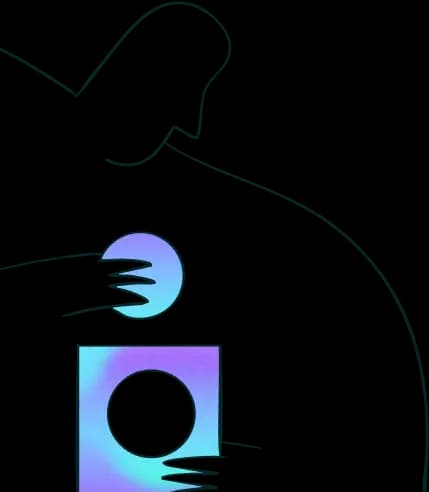
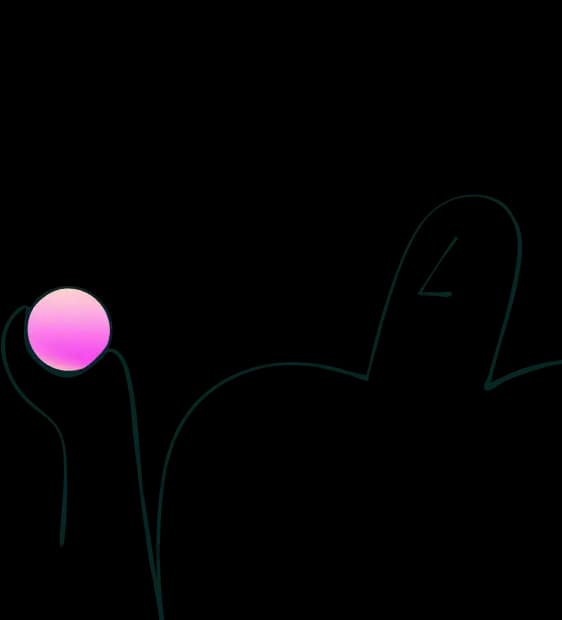
Try for free today
Join over 320,000+ marketers, designers, researchers, and product leaders who use Lyssna to make data-driven decisions.
No credit card required
